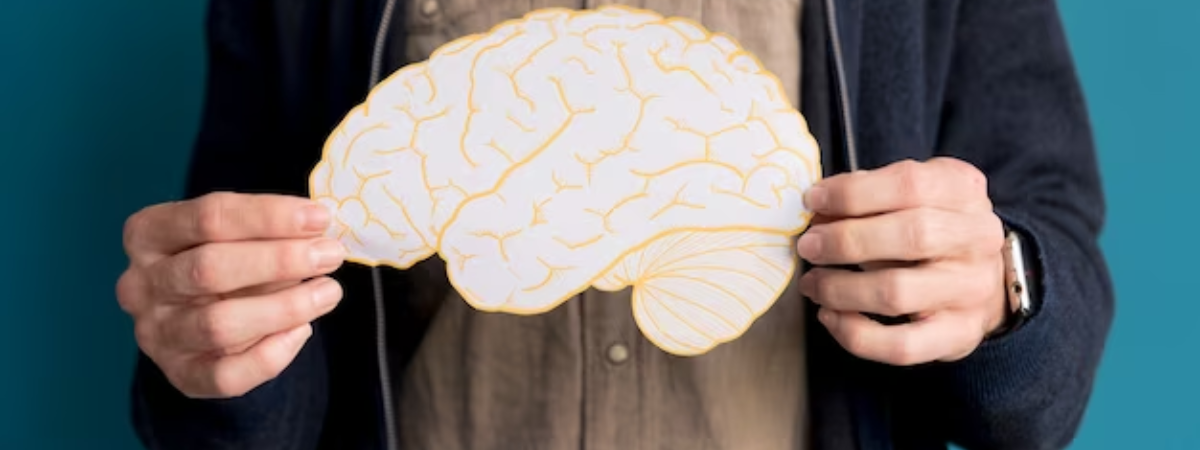
The human brain, a marvel of complexity and functionality, orchestrates every aspect of our being. However, when a stroke occurs, its devastating effects can alter lives in an instant. A brain stroke, often referred to as a cerebrovascular accident (CVA), constitutes a medical emergency that necessitates swift understanding, timely intervention, and comprehensive rehabilitation.
Understanding Brain Strokes
A brain stroke occurs when the blood supply to a part of the brain is interrupted or reduced, leading to the deprivation of oxygen and essential nutrients.
This interruption can happen due to two primary causes:
Ischemic Stroke:
This type of stroke occurs when a blood clot obstructs or narrows a blood vessel supplying the brain. It is the most common type, accounting for nearly 80% of all strokes.
Hemorrhagic Stroke:
Contrarily, a hemorrhagic stroke results from the rupture of a weakened blood vessel, causing bleeding into the brain or the surrounding spaces. Although less frequent, it tends to be more severe due to the direct damage caused by bleeding.
Identifying Risk Factors
Several factors contribute to an individual's susceptibility to strokes:
High Blood Pressure (Hypertension): A leading cause of strokes, high blood pressure can weaken blood vessels over time.
Smoking and Alcohol Consumption: Both increase the risk of stroke by damaging blood vessels and raising blood pressure.
Uncontrolled Diabetes: Poorly managed diabetes can damage blood vessels and increase stroke risk.
Obesity and Sedentary Lifestyle: Lack of physical activity and obesity can contribute to other risk factors like high blood pressure and diabetes.
Recognizing Symptoms
Being aware of stroke symptoms is crucial for timely intervention. Common signs include:
Sudden weakness or numbness, especially on one side of the body
Difficulty speaking or understanding speech
Sudden blurred vision or loss of vision in one or both eyes
Severe headache without an apparent cause
Loss of balance or coordination
Immediate Response and Treatment
Time is of the essence when dealing with strokes. The acronym FAST serves as a mnemonic to identify and act upon stroke symptoms:
Face Drooping
Arm Weakness
Speech Difficulty
Time to Call Emergency Services
Medical treatment varies based on the type and severity of the stroke. Ischemic strokes might require clot-dissolving medications or procedures like thrombectomy to remove the clot. Hemorrhagic strokes may demand surgery to repair the damaged blood vessels and reduce bleeding.
Rehabilitation and Recovery
Recovery from a stroke often involves a multidisciplinary approach, including physical therapy, speech therapy, occupational therapy, and psychological support. The brain's remarkable ability to rewire itself, known as neuroplasticity, forms the basis for rehabilitation, aiding in restoring lost functions and improving quality of life.
Prevention is Paramount
While strokes can occur suddenly, adopting a healthy lifestyle significantly reduces the risk.
Measures include:
Regular exercise and physical activity
Maintaining a balanced diet low in salt and saturated fats
Monitoring and managing blood pressure, cholesterol, and diabetes
Cessation of smoking and moderate alcohol consumption
Conclusion
Brain strokes can have life-altering consequences, but awareness, prompt action, and ongoing care play pivotal roles in mitigating their impact. Educating oneself and others about risk factors, recognizing symptoms, and seeking immediate medical attention are crucial steps toward minimizing the severity of strokes and enhancing the chances of recovery.
Through preventive measures and advancements in acute care and rehabilitation, the medical community strives to reduce the incidence and long-term effects of strokes, empowering individuals to lead healthier, fulfilling lives.
Recent Posts
Exploring the Advancements in Endoscopic Spine Surgery: A Minimally Invasive Breakthrough

Read More
"Empowering Lives: A Comprehensive Guide to Paralysis and Stroke Treatment at Indi Spine-Brain Neuro Care, Hyderabad"

Read More
Empowering Young Lives: Pediatric Neurological Disorders in Children", Early Detection and Intervention is key

Read More
"Preserving Back Health: Expert Strategies to Halt the Progression of Pain with Guidance from Indi Spine-Brain Neuro Care, the Leading Neuro Clinic in Madinaguda, Hyderabad".

Read More
"Guiding Recovery: Expert Care for Brain Stroke Survivors with Dr. Arun Reddy M at Indi Spine-Brain Neuro Care, Madinaguda, Hyderabad "

Read More
